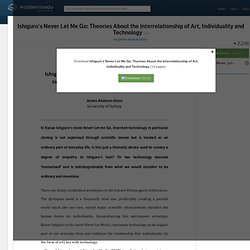

Pier-ing into the future. Many of them are falling or have fallen down, but a competition is on to find a new generation of piers to help save the British seaside.

To some, piers conjure images of comedians down on their luck, a tourism industry steam-rollered by cheap flights to Malaga, and chunks of rusty wrought iron plopping mournfully into the sea. But piers have a future, if the British Urban Regeneration Association (Bura) is to be believed. It is running a competition for architects, planners and the general public to find designs for 21st Century piers. Piers are all about perspective. Take a stroll out along the boards on a fine summer's day, with the sea breeze in your nostrils, and turn around. "In a pier you are walking over the water. "For the Victorians, the air was meant to be better for you the further out to sea you went.
" The first piers were stone, built as landing stages where a natural harbour could not be found, or where the water at the shore was too shallow. That is what the BURA wants. Never Let Me Go 2010. Kathy, Ruth et Tommy, trois amis élevés dans un pensionnat coupé du monde, découvrent qu'ils ne sont que de simples clones conçus dans le but de donner leurs organes… Adapté du roman éponyme de Kazuo Ishiguro, il ne faut certainement pas prendre pour un film de science-fiction.

Le thème du clonage n'est ici qu'une toile de fond, un prétexte aux réflexions sur la vie et la mort. Ishiguro's Never Let Me Go: Theories About the Interrelationship of Art, Individuality and Technology. James Aksman-Glosz Despite discouraging ‘individuality’ at Halisham , a paradoxical element exists,in how the clones were encouraged to express themselves through the creationof art .

Connected to a rumour that existed within Halisham: Analysis of the Movie "Never Let Me Go:" Meaning and Themes. "Never Let Me Go" Movie Meaning: Spoiler Alert!

If you haven't seen the movie already, then you should probably watch the movie first. Unless you are someone who likes to read things that might reveal content about a movie before deciding whether or not to watch it; in which case, spoilers should be no problem. "Never Let Me Go" Movie Analysis. “GREEN ZONE THRILLER” - never-let-me-go.pdf. Never Let Me Go Official Trailer.
What It Means to Be Human: 'Never Let Me Go'' With the recent passing of science fiction visionary Ray Bradbury, I’ve been pulling out a lot of my favorite dystopian novels.

Bradbury’s Fahrenheit 451, published in 1953, remains one of the best-known and well-written books of its kind. Fahrenheit 451 remains culturally relevant; Bradbury points out the importance of reading while his characters live in a world of banned books and spend most of their time indoors planted in front of giant flat screen TVs. The premise sounds eerily familiar, given the drop in reading rates and how many children and adults choose to stare at computers and TV instead of picking up a book. Like Fahrenheit 451, plenty of dystopian novels warn readers about what could happen to future generations if we aren’t careful in the present. One of the most interesting of these types of books is Never Let Me Go by Kasuo Ishiguro.
The novel is steeped in mystery from the get go. The film is moody and bleak. In the film, this scene is skewered. Critiques Never Let Me Go. [Critique] Never let me go de Mark Romanek. Troisième réalisation de Mark Romanek (dont l’inquiétant « Photo obsession »), « Never let me go » est une adaptation du roman éponyme de Kazuo Ishiguro qui a ici signé le scénario.
![[Critique] Never let me go de Mark Romanek](http://cdn.pearltrees.com/s/pic/th/critique-romanek-cineaddict-76478109)
Cet écrivain britannique né au Japon, excelle dans les évocations et les sous-entendus, avec pour fil rouge la quête d’identité chez des individus toujours plus ou moins soumis à une condition d’existence qui leur est imposée sans que jamais ils ne se révoltent. Dans la plupart de ses romans, les héros approchent leur destin comme celle d’une fatalité, après avoir endossé un rôle qu’ils croyaient servir pour une juste cause.
Ishiguro s’attache toujours à décrire un cheminement de vie que ses personnages pensent irrémédiablement prédestiné (tel le majordome de « Les vestiges du jour », adapté au cinéma par James Ivory). Avec « Never let me go », Romanek par le biais d’une introduction écrite, nous informe que dans les années 50, l’espérance de vie atteint déjà les cent ans pour la population.